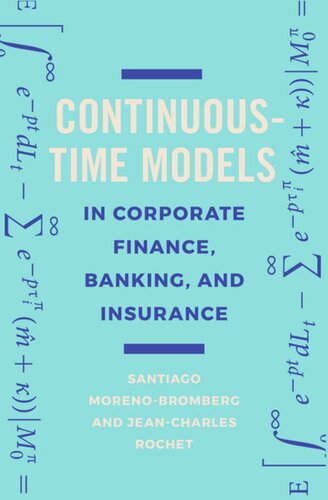

Most ebook files are in PDF format, so you can easily read them using various software such as Foxit Reader or directly on the Google Chrome browser.
Some ebook files are released by publishers in other formats such as .awz, .mobi, .epub, .fb2, etc. You may need to install specific software to read these formats on mobile/PC, such as Calibre.
Please read the tutorial at this link: https://ebookbell.com/faq
We offer FREE conversion to the popular formats you request; however, this may take some time. Therefore, right after payment, please email us, and we will try to provide the service as quickly as possible.
For some exceptional file formats or broken links (if any), please refrain from opening any disputes. Instead, email us first, and we will try to assist within a maximum of 6 hours.
EbookBell Team

4.8
44 reviewsContinuous-Time Models in Corporate Finance synthesizes four decades of research to show how stochastic calculus can be used in corporate finance. Combining mathematical rigor with economic intuition, Santiago Moreno-Bromberg and Jean-Charles Rochet analyze corporate decisions such as dividend distribution, the issuance of securities, and capital structure and default. They pay particular attention to financial intermediaries, including banks and insurance companies.
The authors begin by recalling the ways that option-pricing techniques can be employed for the pricing of corporate debt and equity. They then present the dynamic model of the trade-off between taxes and bankruptcy costs and derive implications for optimal capital structure. The core chapter introduces the workhorse liquidity-management model—where liquidity and risk management decisions are made in order to minimize the costs of external finance. This model is used to study corporate finance decisions and specific features of banks and insurance companies. The book concludes by presenting the dynamic agency model, where financial frictions stem from the lack of interest alignment between a firm's manager and its financiers. The appendix contains an overview of the main mathematical tools used throughout the book.
Requiring some familiarity with stochastic calculus methods, Continuous-Time Models in Corporate Finance will be useful for students, researchers, and professionals who want to develop dynamic models of firms' financial decisions.